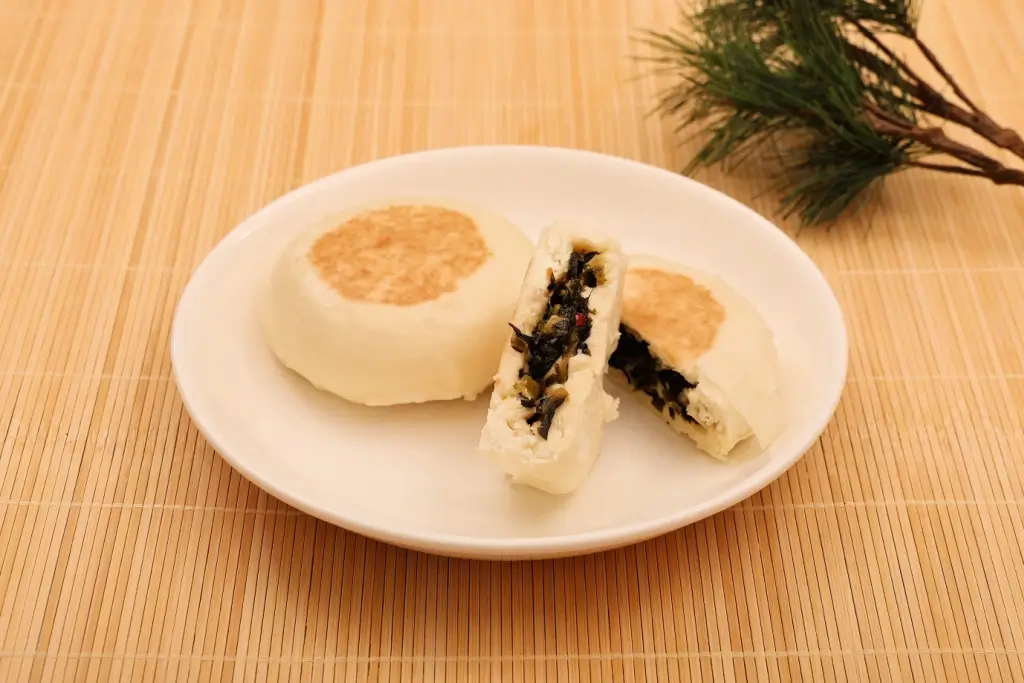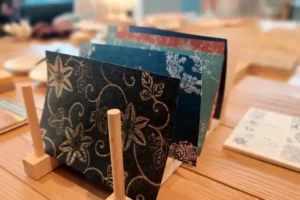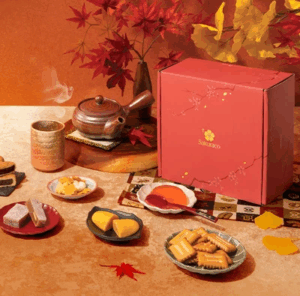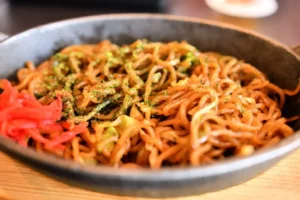Nagano is not only famous for its landscapes but also for its food. From dumplings to ramen, Nagano’s dishes are connected to the region’s climate, history, and natural resources. With a long tradition of preserving ingredients for winter, the local cuisine is hearty and satisfying. Whether you’re craving something sweet, savory, or daring, Nagano’s food will impress anyone who tries it.
Table of Contents
ToggleOyaki dumplings
Oyaki dumplings are a staple in Nagano’s cuisine. They are generally made from fermented buckwheat dough and stuffed with various fillings, ranging from sweet pumpkin and mushrooms to red bean paste. These dumplings are grilled on an iron pan before being steamed, creating a crispy exterior and a chewy interior. Oyaki also represents Nagano’s history of preserving food during cold winters, ensuring food through harsh conditions.

The origins of oyaki are tied to Nagano’s rural farming communities, where people had to find ways to store food for long periods. Vegetables were often preserved in miso or salt and used as fillings for dumplings. This method allowed families to enjoy nutritious meals despite scarce fresh produce. Over time, oyaki has become a beloved symbol of Nagano’s strength and creativity.
Gohei mochi
Gohei mochi is a snack made from pounded rice coated with a sweet and savory miso, soy sauce, and walnuts sauce. This dish is grilled over an open flame, contrasting its soft texture and caramelized surface. The flavors reflect Nagano’s love for miso-based dishes, using ingredients easily sourced in the region. Gohei mochi is often found at festivals and street stalls, making it a popular treat for locals and tourists.
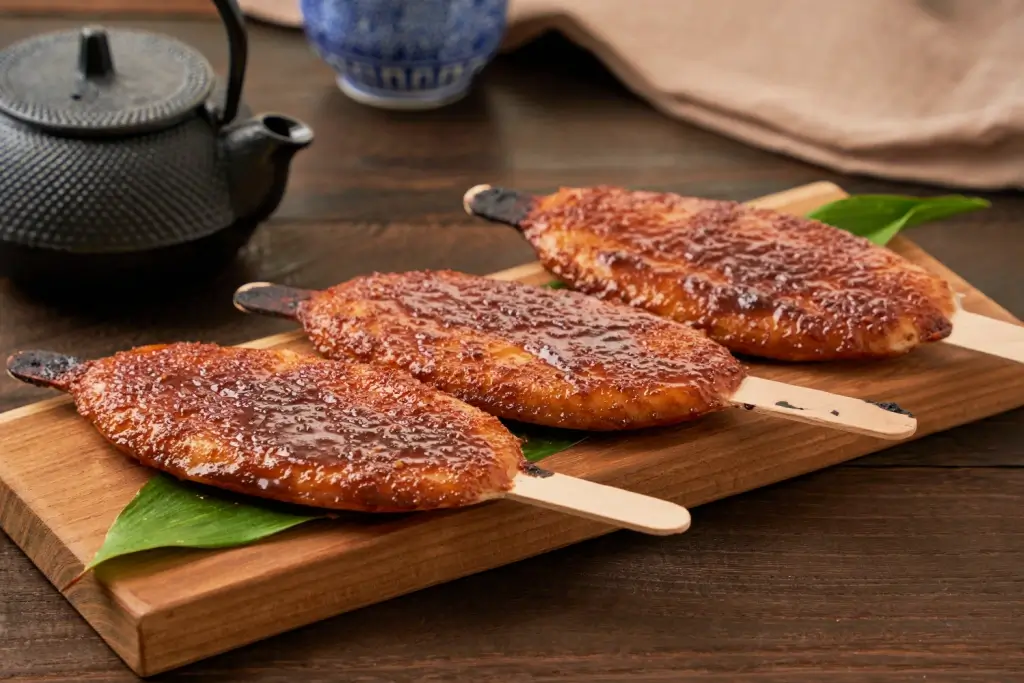
The dish has its roots in Nagano’s mountainous areas, where rice farming has long been central to life. Over time, gohei mochi has evolved from a farmer’s meal to a celebration, often eaten during special occasions. Its portability makes it a convenient snack for those traveling or working outdoors. The sauce, rich with miso and walnuts, highlights the region’s connection to traditional foods and the natural ingredients found in Nagano.
Shinshu miso ramen
Shinshu miso ramen is a signature dish that ramen enthusiasts flock to when visiting Nagano. What sets this ramen apart is its broth, which uses Shinshu miso. It’s a type of miso produced in Nagano for centuries. This miso is known for its mild yet deeply savory flavor, which gives the broth its rich, umami character. Thick, chewy noodles swim in this hearty soup with local vegetables and sometimes a slice of tender pork.
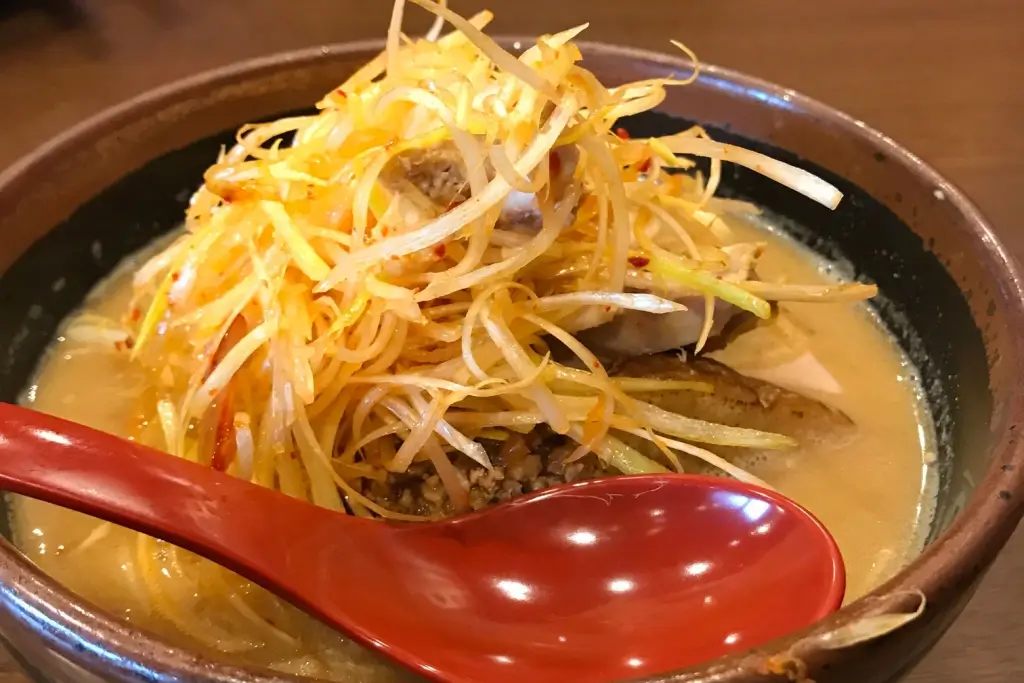
Nagano’s cold climate has shaped its cuisine, and this ramen is a perfect example of how locals have created meals that provide both fuel and comfort. The miso used in the ramen is made from fermented soybeans. This fermentation also preserves the ingredients crucial for survival in the region’s harsh winters.
Mountain vegetables
Mountain vegetables, known as “sansai,” are a staple in Nagano’s diet. These vegetables include bamboo shoots, fiddlehead ferns, and wild greens foraged from the area’s forests and mountains. Sansai is stir-fried, pickled, or added to soups and rice dishes. The slightly bitter taste of some vegetables reflects the environment they grow in. For centuries, locals have foraged these plants, making them a part of the regional diet.
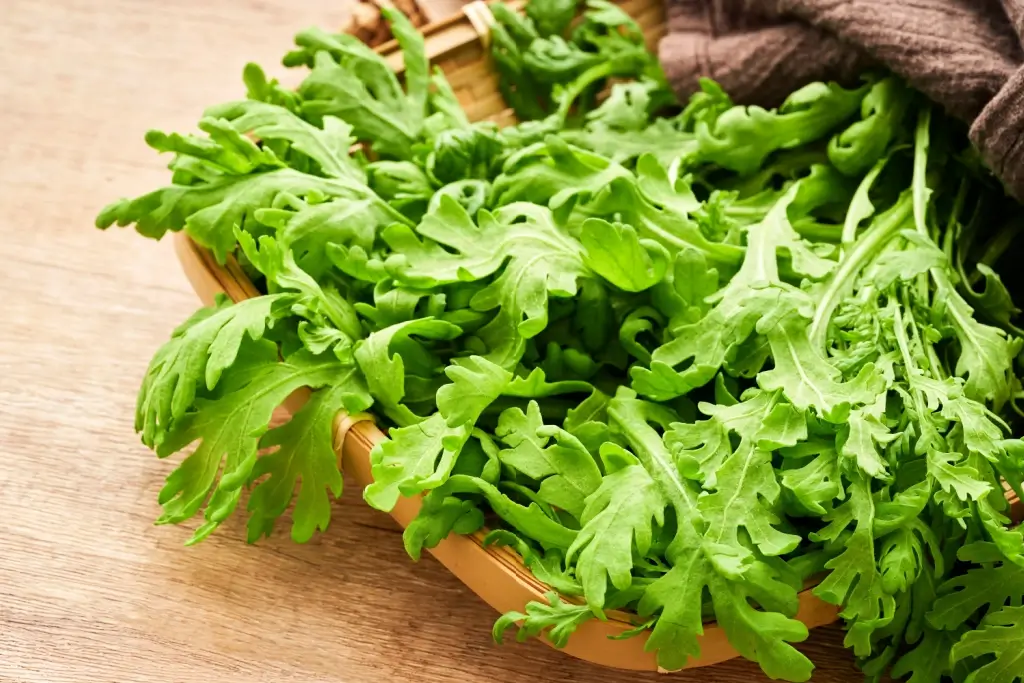
Foraging for mountain vegetables is traditional in Nagano and requires knowledge passed down through generations. The practice has helped maintain a deep connection between the people and their natural surroundings. When the snow melts in spring, families and foragers head into the mountains to collect these wild vegetables, marking the start of a new season. Sansai represents a link between the land and the people.
Are you looking for unique Japanese snacks? Check out Sakuraco! Sakuraco delivers traditional Japanese snacks, teas, and sweets from local Japanese makers directly to your door.
Horse meat
Horse meat, or “basashi,” is a delicacy in Nagano that might surprise some visitors but is highly regarded by locals. Thinly sliced and served raw, like sashimi, basashi has a tender texture and a slightly sweet flavor. It is typically eaten with soy sauce, ginger, and garlic. While unusual to some, the consumption of horse meat in Nagano dates back to the time of the samurai but is enjoyed as a gourmet dish today.
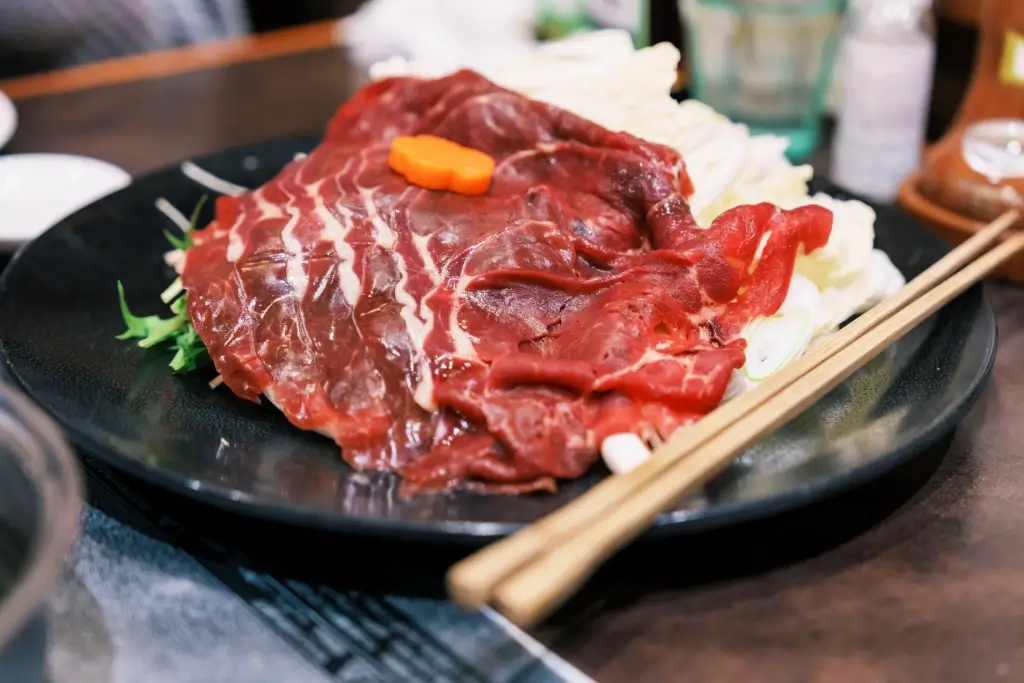
Nagano’s history with horse meat reflects its rural, mountainous nature, where farming and raising animals were necessary for survival. Horse meat was a practical choice in regions where raising cattle or pigs was difficult due to the terrain. It has become a culinary tradition, appreciated for its taste and nutritional value. Locals take pride in this dish, which carries centuries of history and cultural significance.
Sanzoku-yaki fried chicken
‘Sanzoku-yaki” is Nagano’s version of fried chicken, marinated in a bold mix of soy sauce, garlic, and ginger before being fried to perfection. This flavorful preparation results in crispy chicken on the outside while tender and juicy on the inside. Unlike the standard fried chicken, the marinade gives sanzoku-yaki a rich, savory flavor that stands out. Served with rice or cabbage, it’s a dish that reflects Nagano’s love for simple yet delicious meals.
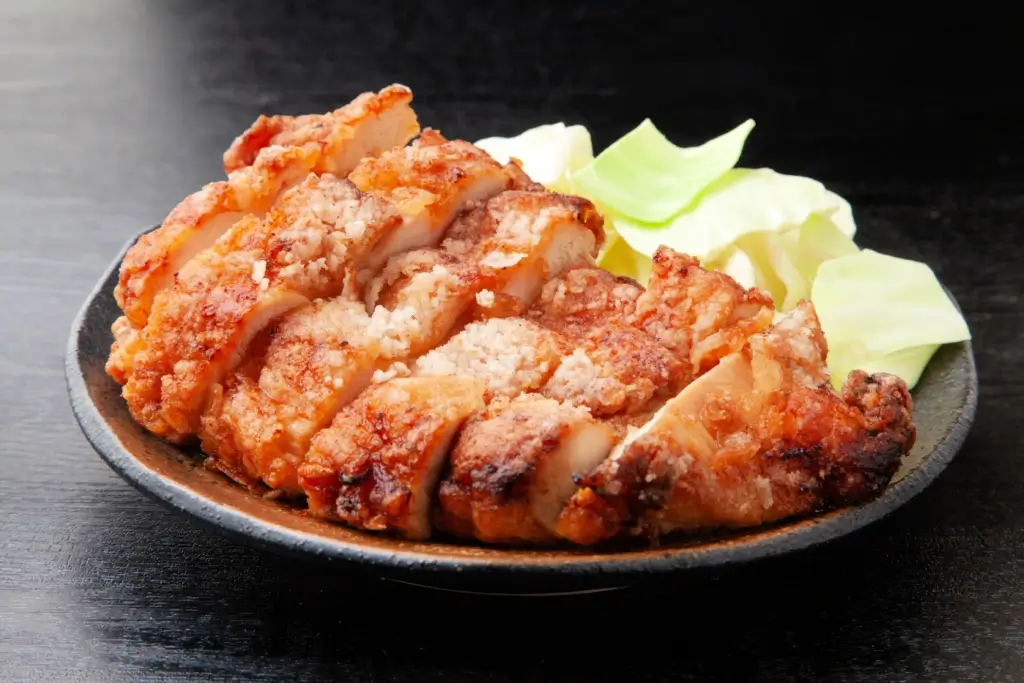
The origins of sanzoku-yaki are tied to Nagano’s rural lifestyle, where hearty meals were needed to sustain families during long work days. Additionally, the dish’s flavors and crunch make it a favorite for locals and visitors. It’s often prepared during festivals or special events! Sanzoku-yaki shows the region’s focus on using bold, natural flavors to create comfort food that warms the heart and fills the stomach.
Why is the food in Nagano Prefecture so delicious?
People enjoy Nagano’s dishes because they are crafted with local ingredients, many foraged or grown in the region’s rich natural environment. The cold climate has led to hearty, flavorful meals that also provide nourishment and comfort. From using miso in ramen to foraging mountain vegetables, Nagano’s food tells a story of resilience, resourcefulness, and respect for the land.
Generally, the variety of dishes, from oyaki dumplings to Shinshu miso ramen, reflects the region’s heritage. Each dish also has its own history, sharing the same emphasis on simplicity and quality. Locals also take pride in their food, which is passed down through generations and is central to Nagano’s cultural identity. Whether sampling street food or sitting down for a meal, Nagano’s food offers a taste of the region’s history, culture, and natural beauty. Have you ever tried any of these Nagano Foods? Which one did you like the best? Let us know in the comments below!

